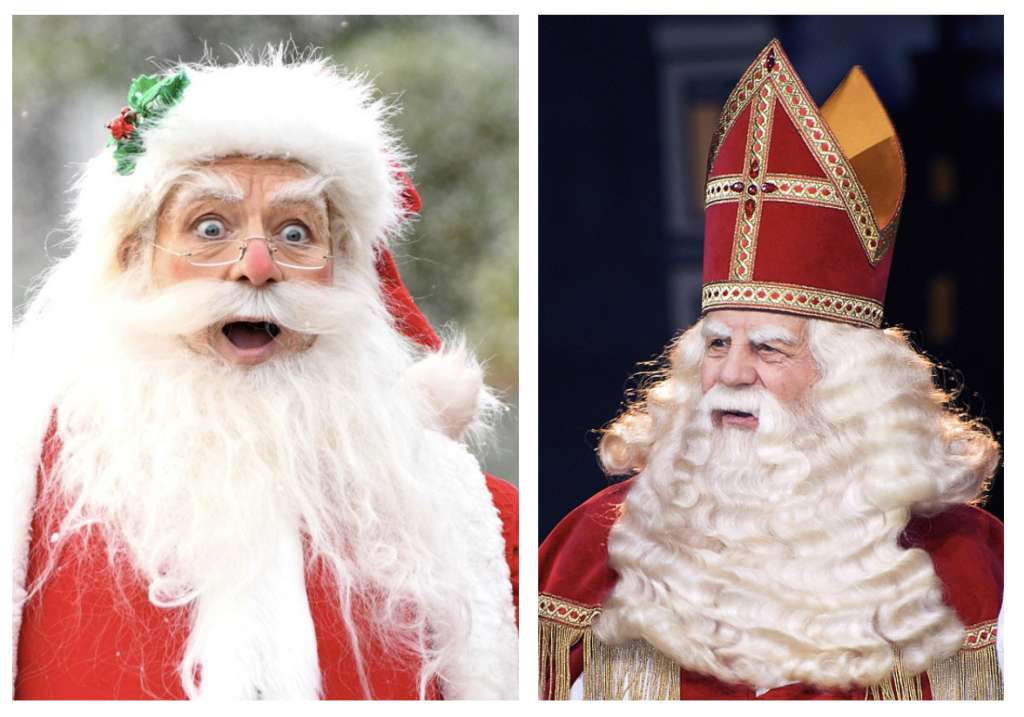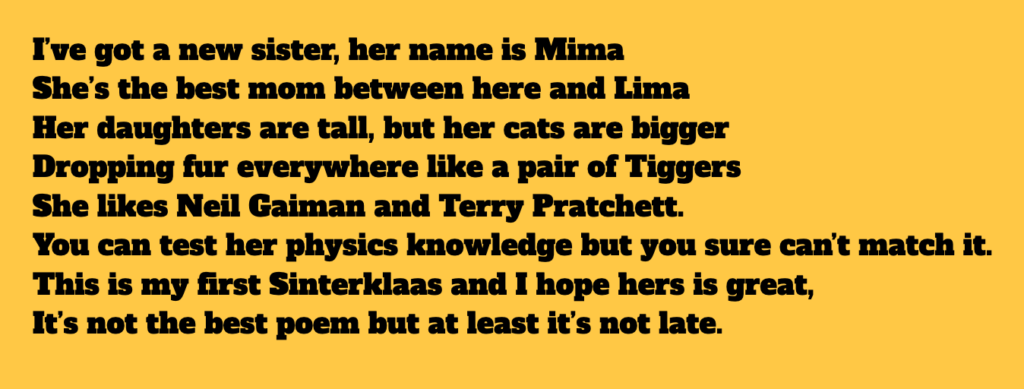It’s not accurate to say that The Netherlands has two Christmases. December 25th is still Christmas (Kerstfeest in Dutch) and a good number of kids still expect presents from de Kerstman (literally “the Christmas-man”), who looks like an American would expect. Normal Christmas stuff, in other words.
But… *Yoda voice* …there is another.
Here’s the deal, as best as I can make it out: back in the 4th century in present-day Turkey, St. Nicholas was a real person renowned for his generosity. Fast-forward a few centuries, and Christian children in various places were getting presents on Nicholas’s feast day, December 6th. Fast-forward a few more centuries, and Martin Luther encouraged people to give the kids gifts on Christmas instead, cause Jesus > saints, amiright?
But all he succeeded in doing was to create more holiday gift-giving fellows. All across Europe, like a bunch of Spider-Men popping out of the multi-verse, new Santa characters evolved with their own back stories and traditions.

In Nederland and Belgium the local version is called Sinterklaas. He’s still from Turkey. His holiday is still December 6th1. Instead of arriving from the North Pole on Christmas Eve via flying sleigh, he arrives from Spain (Spain?!) in mid-November via steamboat. Instead of a bunch of toy-making elves, he has an awfully, terribly racist helper character2 He rides a horse named Amerigo to get around. Instead of candy in stockings, it’s candy in shoes. And so on.
“But they dress completely differently!”
—My downstairs neighbor, when I told her about my confusion between the two white-bearded Christmas men
The craziness does not end with the Turk-on-a-steamboat business, because like all Santas, Sinterklaas delegates the actual gift-giving to regular folks like you and me. And Sinterklaas—the holiday—is a pro-level Secret Santa. Once you’ve been randomly assigned your recipient (mine was Kiki’s sister Mima) then you’re tasked with three labors:
- The present
- The wrapping, which is called a surprise3 and is meant to reflect the interests or personality of the recipient
- A poem about the other person that they read before opening the present
The gift itself was easy enough: Mima got a nice pepper mill. For the surprise, Mima got a giant ball of yarn; lucky for me, there are literally dozens of online tutorials to be found, and the directions for this one were simple enough. The poem was also pretty straight-forward, though it reads a bit like an 80s rap.

My Sinterklaas-giver was Kiki’s mom Kien; she gave me a nice book about Dutch water infrastructure, a charming poem, and a surprise of a little doll riding Air Force One like a cowboy on a horse. Kiki got socks and a scented candle hidden inside an honest-to-god gingerbread house.
All in all it was a successful Sinterklaas, even if it was over Zoom (such a common way of gathering these days that I almost forgot to mention it). Now, God and COVID willing, we begin prepping for a trip back to the USA, where our Christmas traditions are COMPLETELY NORMAL.

- To make matters more confusing, both the holiday and the man are called Sinterklaas. To make matters even MORE confusing, the gift-giving happens the evening before, on the 5th.
- After years of the usual idiotic “but it’s tradition!!” protests, Zwarte Piet is finally falling out of favor, though not fast enough. Kiki specifically asked me to mention that she is 100% against Zwarte Piet.
- It’s spelled the same way as “surprise” but it’s pronounced sor-PREE-suh.